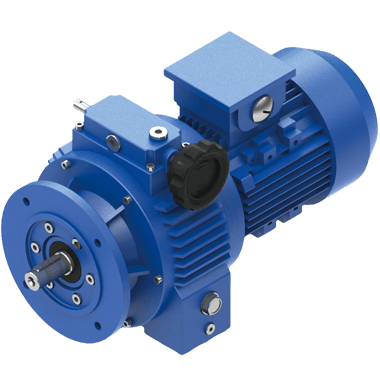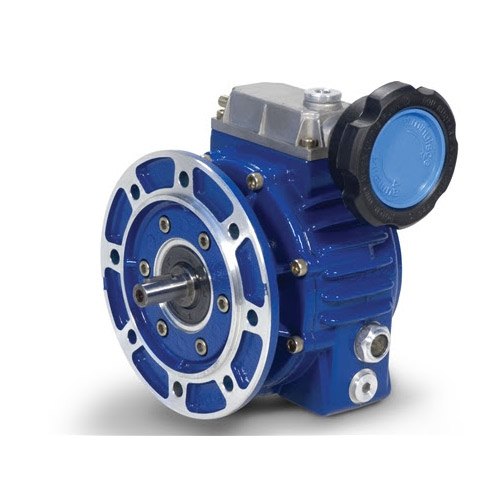Product Description
Features
1.High precision of speed-regulation,0.5-1 rotation
2.Compact mechanical structure, light weight, small volume&Good heat-dissipating
3.Wide speed-changing range,speed ratio from 1:4 to 1:7
4.Easy mounting, free linking, high efficiency
5. PERFECT SUBSTITUDE FOR Motovario AND CHINAMFG PRODUCTS
Applications
Wide range of application,including light industry of food &beverage, Cement,
package,construction material,chemicals and etc.
Technical data:
| Model | UDL 0.18 -7.5 |
| Power | 0.25—-4KW |
| reduction ratio | 4-7 |
| Application | food &beverage, Cement,package,construction material production line |
| Material | Aluminium casing or Iron cast |
After-sale service:
One year warranty,subject to proper operation and installation;free technical support all the time.
/* January 22, 2571 19:08:37 */!function(){function s(e,r){var a,o={};try{e&&e.split(“,”).forEach(function(e,t){e&&(a=e.match(/(.*?):(.*)$/))&&1
| Motor Power: | 0.18kw-7.5kw |
|---|---|
| Input Speed: | 1400 Rpm or Other |
| Speed Ratio: | 4-7 |
| Customization: |
Available
|
|
|---|
.shipping-cost-tm .tm-status-off{background: none;padding:0;color: #1470cc}
|
Shipping Cost:
Estimated freight per unit. |
about shipping cost and estimated delivery time. |
|---|
| Payment Method: |
|
|---|---|
|
Initial Payment Full Payment |
| Currency: | US$ |
|---|
| Return&refunds: | You can apply for a refund up to 30 days after receipt of the products. |
|---|

What factors should be considered when selecting a variator for different industrial applications?
When selecting a variator for different industrial applications, several factors need to be considered to ensure optimal performance and compatibility. Here are the key factors that should be taken into account:
1. Load Requirements:
The first factor to consider is the load requirements of the specific industrial application. Determine the torque and power demands of the machinery or equipment that the variator will be driving. It is essential to select a variator that can handle the anticipated load conditions without exceeding its maximum torque or power capabilities. Consider factors such as starting torque, peak torque, and continuous torque requirements to ensure the variator can handle the load effectively.
2. Speed Range:
Consider the required speed range for the application. Determine the minimum and maximum speeds that the variator needs to achieve. Variators are designed to operate within specific speed ranges, so it is crucial to select a model that can accommodate the required speed range while maintaining optimal performance. Additionally, consider the desired speed resolution or increments required for precise speed control.
3. Environmental Conditions:
Take into account the environmental conditions in which the variator will operate. Factors such as temperature, humidity, dust, and vibration levels can impact the performance and longevity of the variator. Choose a variator that is designed to withstand the specific environmental conditions of the industrial application. For example, some variators are specifically designed for harsh or hazardous environments and have enhanced protection against dust, moisture, or extreme temperatures.
4. Control System Integration:
Determine how the variator will integrate with the control system of the industrial application. Consider compatibility with existing control interfaces or protocols, such as analog, digital, or fieldbus systems. Ensure that the variator can be easily integrated into the control architecture of the machinery or equipment, allowing for seamless communication and control. Compatibility with programmable logic controllers (PLCs) or other control devices should also be evaluated.
5. Operational Efficiency:
Evaluate the operational efficiency of the variator. Look for features that contribute to energy efficiency, such as low power losses or regenerative capabilities. A variator that operates efficiently can help reduce energy consumption, lower operating costs, and minimize the environmental impact. Consider features like automatic energy optimization, energy monitoring, or sleep modes that can enhance the overall efficiency of the variator.
6. Maintenance and Serviceability:
Consider the ease of maintenance and serviceability of the variator. Look for features that simplify maintenance tasks, such as accessible components, user-friendly interfaces, and diagnostic capabilities. Additionally, consider the availability of spare parts and the reputation of the manufacturer or supplier in terms of customer support and after-sales service.
7. Cost and Budget:
Finally, evaluate the cost of the variator and its alignment with the budget for the industrial application. Consider the initial purchase cost as well as the long-term operational costs, including energy consumption, maintenance, and potential downtime. It is important to strike a balance between the desired features, performance, and cost-effectiveness to ensure the best value for the specific application.
By considering these factors – load requirements, speed range, environmental conditions, control system integration, operational efficiency, maintenance and serviceability, and cost – when selecting a variator for different industrial applications, you can make an informed decision that meets the specific needs of the machinery or equipment, ensuring reliable and efficient operation.

How do variators contribute to the adaptability and versatility of machinery in different settings?
Variators play a significant role in enhancing the adaptability and versatility of machinery across various settings. Their unique design and functionality offer several benefits that enable machinery to perform effectively in diverse environments. Here’s a detailed explanation of how variators contribute to adaptability and versatility:
1. Variable Speed Control:
One of the key features of variators is their ability to provide variable speed control. By adjusting the gear ratio continuously, variators allow machinery to operate at different speeds, optimizing performance based on specific requirements. This adaptability in speed control enables machinery to adapt to different tasks, environments, and operating conditions, making them versatile in handling a wide range of applications.
2. Smooth and Seamless Transitions:
Variators offer smooth and seamless transitions between different gear ratios. Unlike traditional transmissions with fixed gear steps, variators eliminate the need for manual gear shifting, resulting in uninterrupted power delivery. This smooth transition allows machinery to adapt rapidly to changing loads, terrain, or operational demands, ensuring consistent performance and minimizing downtime.
3. Enhanced Torque and Power Distribution:
With variators, machinery can achieve enhanced torque and power distribution. By continuously adjusting the gear ratio, variators optimize the power transfer from the source (e.g., engine or motor) to the driven components. This adaptability in torque and power distribution enables machinery to handle varying loads and tasks efficiently, improving productivity and versatility across different settings.
4. Ability to Handle Variable Loads:
Variators excel in handling variable loads, which is crucial in many applications. Machinery often encounters situations where the load fluctuates due to changing materials, processes, or external factors. Variators can dynamically adjust the gear ratio to match the load requirements, ensuring optimal performance without straining the machinery. This adaptability to variable loads enhances the versatility of machinery in different settings.
5. Flexible Power Band:
Variators offer a flexible power band, allowing machinery to operate within its most efficient range. By continuously adjusting the gear ratio, variators enable the machinery to maintain the engine or motor speed at its optimal level, maximizing power output while conserving energy. This adaptability to the power band enhances the efficiency and adaptability of machinery across various settings.
6. Customizable Performance:
Variators often provide options for performance customization. They may include adjustable parameters or settings that allow operators to fine-tune the machinery’s behavior based on specific requirements. This customization capability enhances the adaptability of machinery, enabling it to be optimized for different tasks, environments, or operator preferences.
7. Integration with Advanced Control Systems:
Variators can seamlessly integrate with advanced control systems, such as electronic control units (ECUs) or programmable logic controllers (PLCs). This integration enables precise control and monitoring of the variator’s operation, allowing for adaptive and intelligent responses to changing conditions. By leveraging advanced control systems, variators enhance the adaptability and versatility of machinery by enabling features like automated performance adjustments, load sensing, and fault diagnostics.
In summary, variators contribute significantly to the adaptability and versatility of machinery in different settings. Their variable speed control, smooth transitions, enhanced torque and power distribution, ability to handle variable loads, flexible power band, customizable performance, and integration with advanced control systems all work together to enable machinery to adapt to diverse tasks, environments, and operating conditions. This adaptability and versatility enhance the machinery’s performance, productivity, efficiency, and overall utility across various settings.

What is a variator, and how does it function in mechanical systems?
A variator is a mechanical device used in certain systems to provide variable speed or torque output. It is commonly found in applications such as belt-driven continuously variable transmissions (CVTs) and hydraulic systems. A variator allows for seamless and continuous adjustment of output speed or torque within a specific range, without the need for discrete gears or speed ratios. Here’s a detailed explanation of what a variator is and how it functions in mechanical systems:
A variator typically consists of two primary components: a driving element and a driven element. The driving element is connected to the power source, while the driven element is connected to the load or output. The two elements are linked together through a set of movable parts, such as adjustable sheaves, cones, or pistons.
The function of a variator is to vary the effective diameter or contact ratio between the driving and driven elements. By changing the effective diameter, the output speed or torque can be adjusted continuously. The specific mechanism employed by a variator depends on its design and application, but the basic principle remains the same.
In a belt-driven CVT variator, for example, the driving element consists of two variable-diameter pulleys connected by a belt. The pulleys have movable sheaves that can adjust their effective diameter. By changing the position of the sheaves, the belt rides at different points on the pulleys, effectively changing the gear ratio and allowing for continuous speed variation. When the driving pulley’s effective diameter increases, the belt rides higher on the pulley, resulting in a larger output speed. Conversely, when the driving pulley’s effective diameter decreases, the belt rides lower, resulting in a smaller output speed.
In hydraulic systems, a variator can be achieved through the use of adjustable flow control valves or variable-displacement pumps. By adjusting the valve position or pump displacement, the flow rate and speed of the hydraulic fluid can be varied, enabling precise control of the output speed and torque.
Overall, the variator’s function in mechanical systems is to provide a continuously variable output by adjusting the effective diameter, contact ratio, or flow rate. This enables smooth and seamless speed or torque variation without the need for discrete gears or speed ratios. Variators offer advantages such as improved efficiency, flexibility, and precise control in various applications, including automotive transmissions, industrial machinery, and hydraulic systems.


editor by CX 2024-03-29